P0505,P0506, P0507
Symptom: Low, high or hunting idle speed. Idle speed sensitive to load changes.
Idle air control valve
Symptom of fault
Low, high or hunting idle speed. Idle speed sensitive to load changes.
Conditions
|
•
|
The speed of the car has
exceeded 20 km/h in this driving cycle
|
|
•
|
Engine coolant temperature >60°C (>140°F)
|
|
•
|
Throttle position sensor indicates idling speed
|
|
•
|
Engine speed is above 1200 rpm or below 700 rpm
|
|
•
|
Normal idling speed cannot be achieved
|
Diagnostic help
Operation of the idle air control valve can be checked with the ISAT scan
tool.
|
-
|
To ascertain the current degree of
opening:
|
|
-
|
Select
"READ FUNCTIONS".
|
The valve will be activated for 10 sec.
Checking the wiring. Intermittent faults may occur as a result of occasional short circuits
and breaks in the wiring. Jiggle the leads and in-line connectors at several places and in
different directions to reveal faults in the wiring harness. Observe the multimeter, ISAT scan
tool or test lamp while carrying out this check.
Diagnostic procedure
1. Check for air leakage
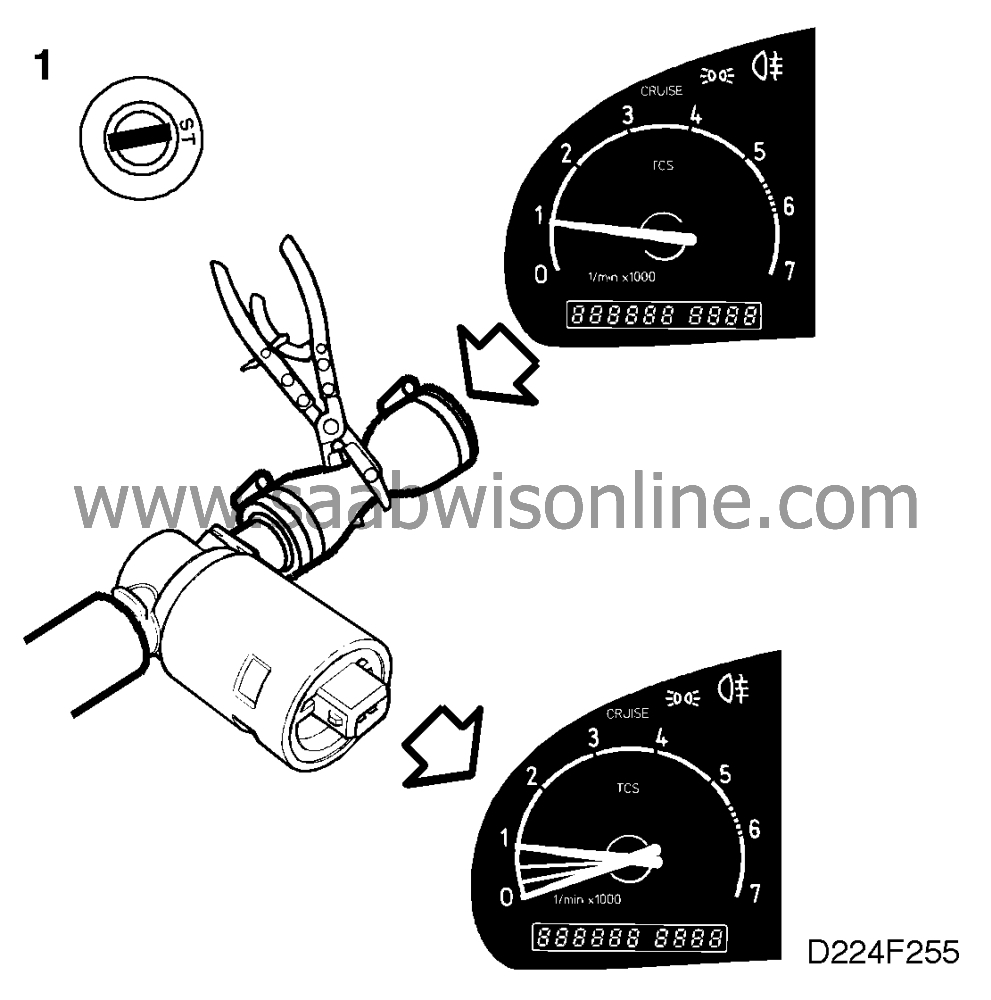
|
-
|
Check whether air leakage occurs,
as follows:
|
|
-
|
Start the engine and run it at idling
speed.
|
|
-
|
Constrict the flow of air through the
idle air control valve by pinching off the air hose using a pair of pliers.
|
Idling speed should drop drastically.
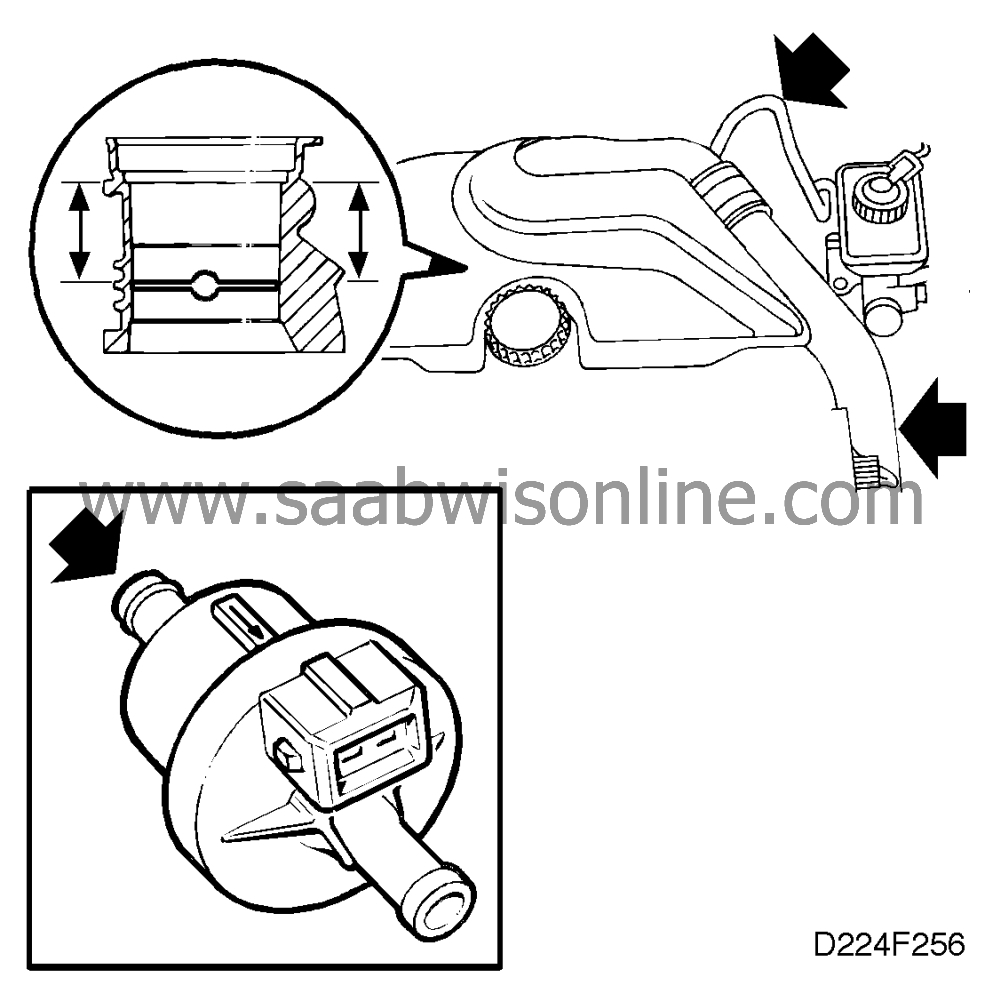
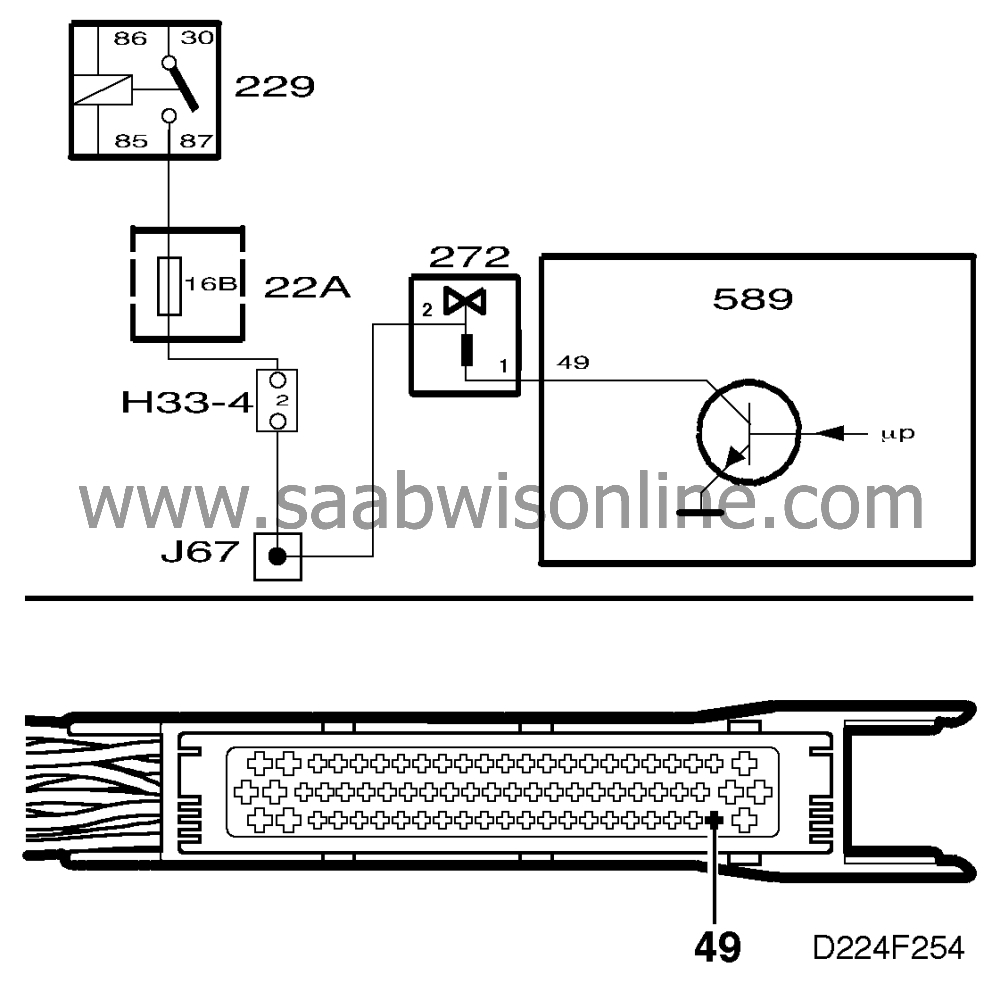
Has idling speed dropped?
Continue with point 2.
Continue fault diagnosis by carrying out the following checks:
• air leakage (after throttle)
• poorly adjusted throttle
• defective brake servo
• purge valve fastened in open position
Rectify as necessary and then continue with point 4.
2. Check the idle air control valve's power
supply
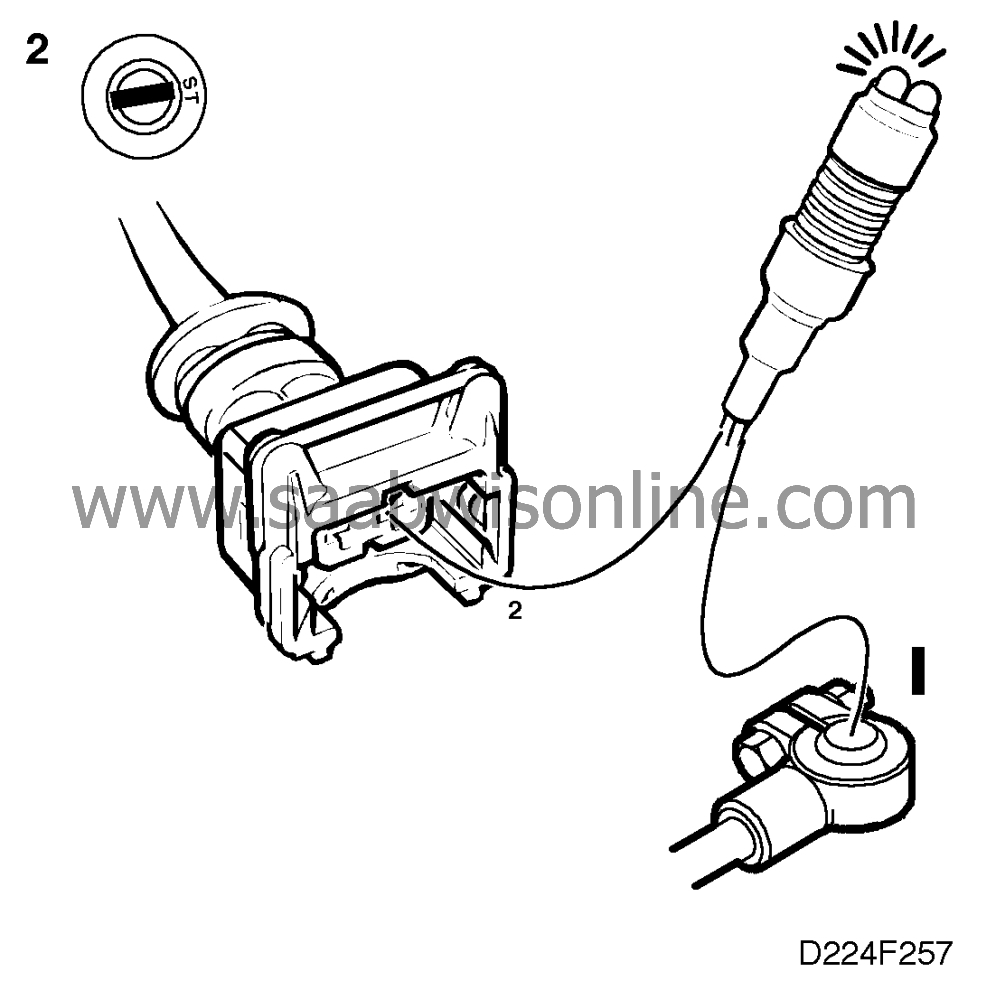
|
-
|
Unplug the idle air control
valve's 2-pin connector.
|
|
-
|
Start the engine and run it at idling
speed.
|
|
-
|
Connect the test lamp to pin 2 of
the female connector and a good grounding point on the engine.
|
The test lamp should light up.
Is the test lamp on?
Continue with point 3.
Repair or replace the lead between pin 2 of the connector and crimped
connection J67. Then continue with point 4.
3. Check the lead between the idle air control
valve and the control module
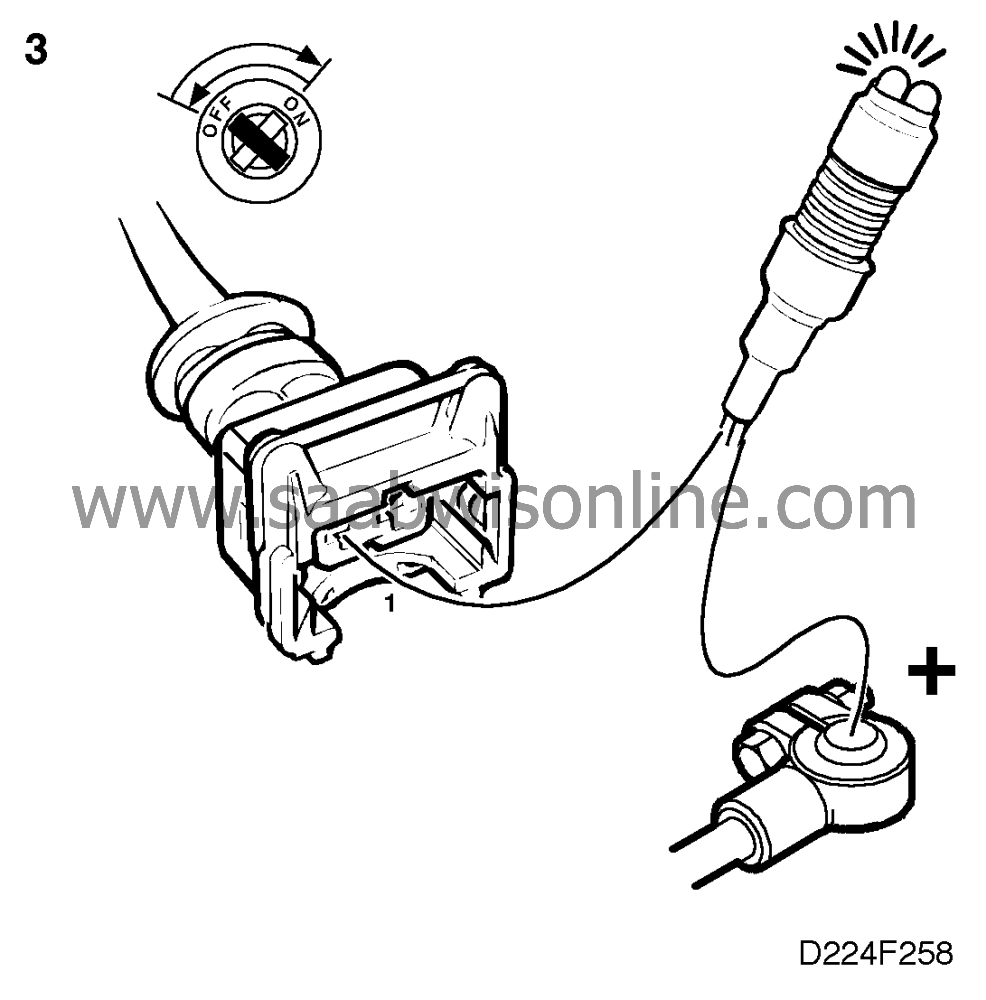
|
-
|
Turn the ignition switch to the ON
position and then back to the OFF position.
|
|
-
|
Connect the test lamp to pin 1 of
the female connector and battery positive (B+).
|
The test lamp should light up.
|
-
|
Remove fuse 28. The test lamp
should now shine weakly or go out altogether.

|
Has the test lamp gone out or nearly so?
Change the idle air control valve and continue with point 4.
Check the lead between pin 1 of the connector and pin 49 of the control
module for continuity and shorting. Rectify if necessary. Then continue with point 4.
4. Final check
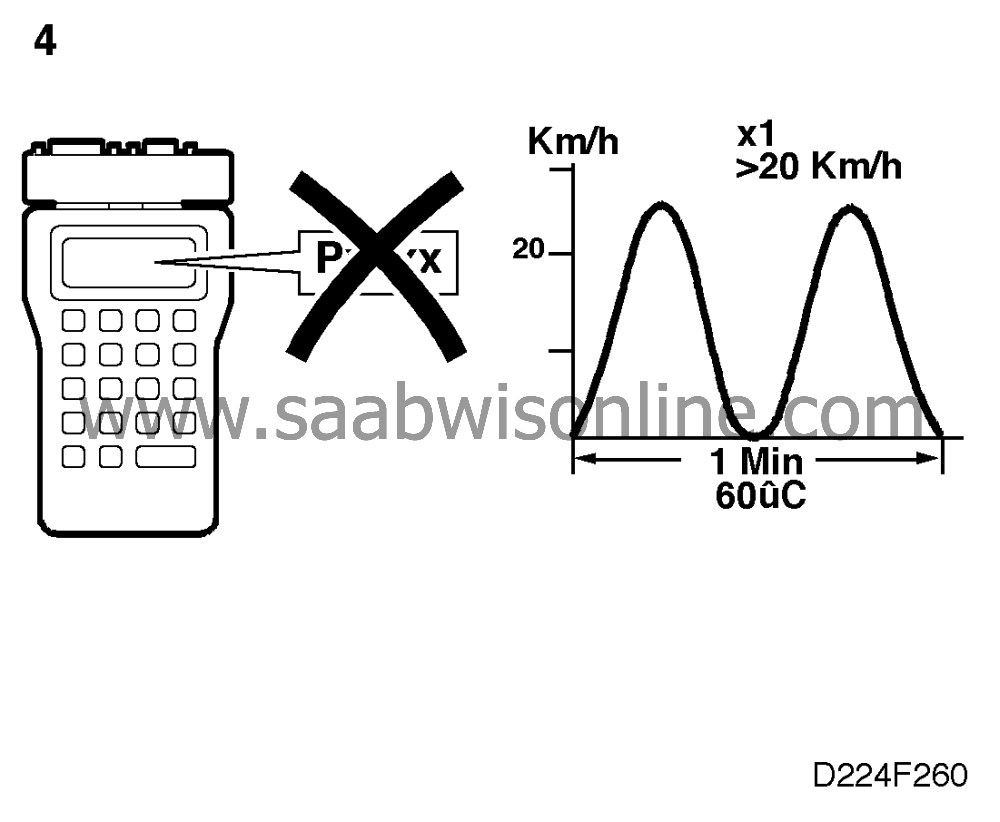
|
-
|
Clear the diagnostic trouble
code.
|
|
-
|
Perform a driving
cycle:
|
|
|
•
|
Drive the car at varying engine
loads and rpm until the coolant temperature rises above 60°C (140°F), but for at
least 1 minute if this temperature is reached earlier.
|
|
|
•
|
Car speed should exceed 20 km/h at some time during the driving
cycle.
|
|
|
•
|
Stop the car, apply the handbrake and run the engine at idling
speed.
|
|
|
•
|
Switch off the A/C and all electrical equipment. If the car has automatic
transmission, select position P. Allow the engine to stabilize its idling speed for 10
sec.
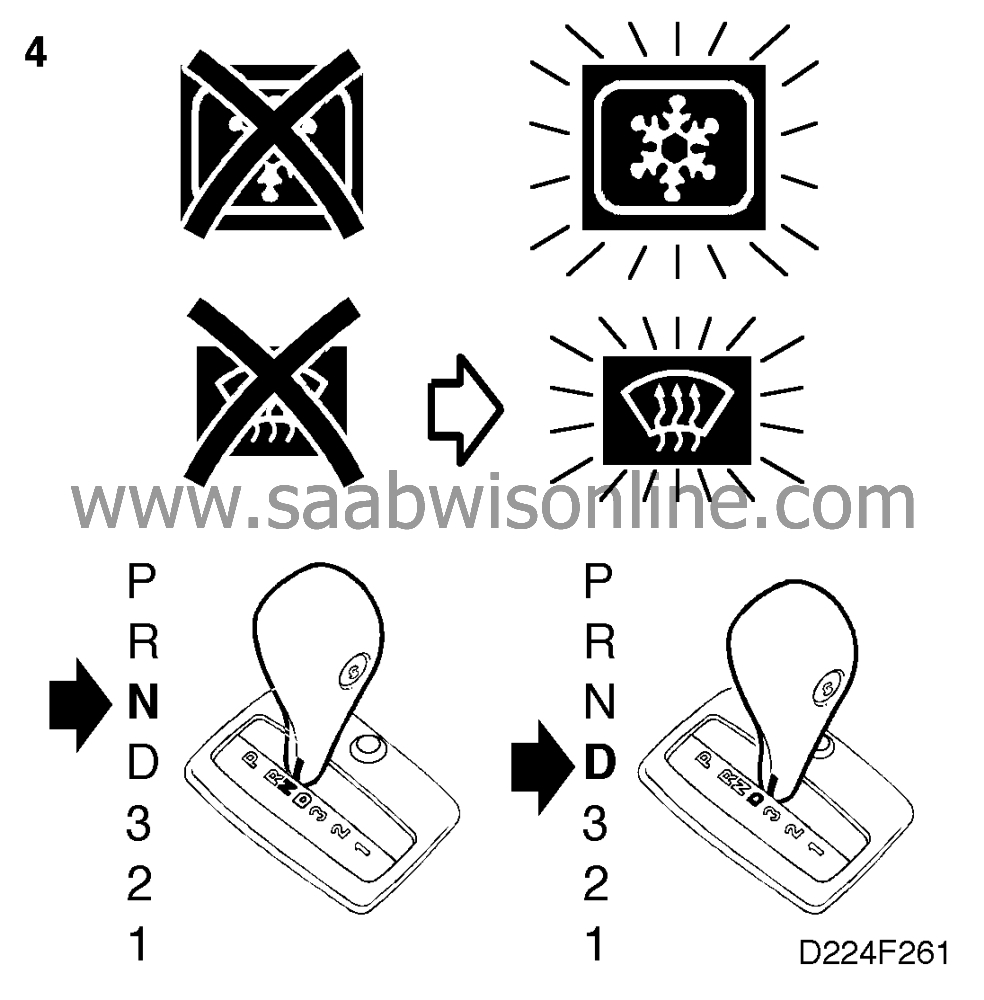
|
|
|
•
|
Switch on the A/C and all electrical equipment. If the car has automatic
transmission, select position D. Allow the engine to stabilize its idling speed for 10
sec.
|
|
-
|
Evaluation of driving cycle: Check
whether the diagnostic trouble code has recurred.

|
Has the diagnostic trouble code recurred?
Proceed to
 .
.
The remedial measure taken was correct.












